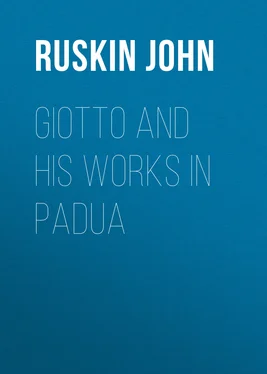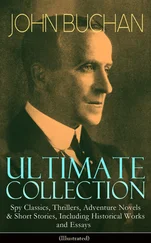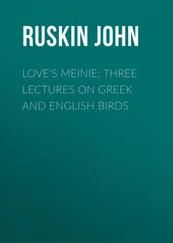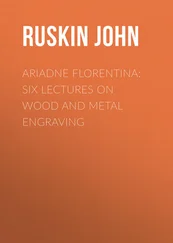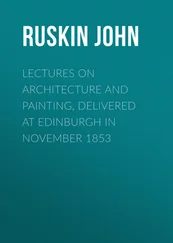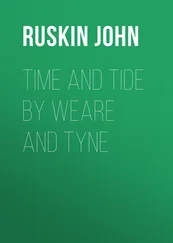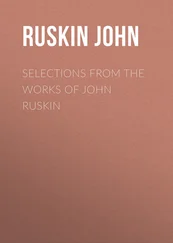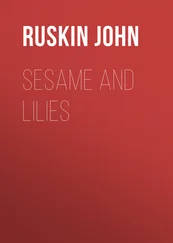John Ruskin - Giotto and his works in Padua
Здесь есть возможность читать онлайн «John Ruskin - Giotto and his works in Padua» — ознакомительный отрывок электронной книги совершенно бесплатно, а после прочтения отрывка купить полную версию. В некоторых случаях можно слушать аудио, скачать через торрент в формате fb2 и присутствует краткое содержание. Жанр: foreign_antique, foreign_home, literature_19, visual_arts, на английском языке. Описание произведения, (предисловие) а так же отзывы посетителей доступны на портале библиотеки ЛибКат.
- Название:Giotto and his works in Padua
- Автор:
- Жанр:
- Год:неизвестен
- ISBN:нет данных
- Рейтинг книги:3 / 5. Голосов: 1
-
Избранное:Добавить в избранное
- Отзывы:
-
Ваша оценка:
- 60
- 1
- 2
- 3
- 4
- 5
Giotto and his works in Padua: краткое содержание, описание и аннотация
Предлагаем к чтению аннотацию, описание, краткое содержание или предисловие (зависит от того, что написал сам автор книги «Giotto and his works in Padua»). Если вы не нашли необходимую информацию о книге — напишите в комментариях, мы постараемся отыскать её.
Giotto and his works in Padua — читать онлайн ознакомительный отрывок
Ниже представлен текст книги, разбитый по страницам. Система сохранения места последней прочитанной страницы, позволяет с удобством читать онлайн бесплатно книгу «Giotto and his works in Padua», без необходимости каждый раз заново искать на чём Вы остановились. Поставьте закладку, и сможете в любой момент перейти на страницу, на которой закончили чтение.
Интервал:
Закладка:
I am certain that this is the estimate of his character which must be arrived at by an attentive study of his works, and of the few data which remain respecting his life; but I shall not here endeavour to give proof of its truth, because I believe the subject has been exhaustively treated by Rumohr and Förster, whose essays on the works and character of Giotto will doubtless be translated into English, as the interest of the English public in mediæval art increases. I shall therefore here only endeavour briefly to sketch the relation which Giotto held to the artists who preceded and followed him, a relation still imperfectly understood; and then, as briefly, to indicate the general course of his labours in Italy, as far as may be necessary for understanding the value of the series in the Arena Chapel.
The art of Europe, between the fifth and thirteenth centuries, divides itself essentially into great branches, one springing from, the other grafted on, the old Roman stock. The first is the Roman art itself, prolonged in a languid and degraded condition, and becoming at last a mere formal system, centered at the feet of Eastern empire, and thence generally called Byzantine. The other is the barbarous and incipient art of the Gothic nations, more or less coloured by Roman or Byzantine influence, and gradually increasing in life and power.
Generally speaking, the Byzantine art, although manifesting itself only in perpetual repetitions, becoming every day more cold and formal, yet preserved reminiscences of design originally noble, and traditions of execution originally perfect.
Generally speaking, the Gothic art, although becoming every day more powerful, presented the most ludicrous experiments of infantile imagination, and the most rude efforts of untaught manipulation.
Hence, if any superior mind arose in Byzantine art, it had before it models which suggested or recorded a perfection they did not themselves possess; and the superiority of the individual mind would probably be shown in a more sincere and living treatment of the subjects ordained for repetition by the canons of the schools.
In the art of the Goth, the choice of subject was unlimited, and the style of design so remote from all perfection, as not always even to point out clearly the direction in which advance could be made. The strongest minds which appear in that art are therefore generally manifested by redundance of imagination, and sudden refinement of touch, whether of pencil or chisel, together with unexpected starts of effort or flashes of knowledge in accidental directions, gradually forming various national styles.
Of these comparatively independent branches of art, the greatest is, as far as I know, the French sculpture of the thirteenth century. No words can give any idea of the magnificent redundance of its imaginative power, or of the perpetual beauty of even its smallest incidental designs. But this very richness of sculptural invention prevented the French from cultivating their powers of painting, except in illumination (of which art they were the acknowledged masters), and in glass-painting. Their exquisite gift of fretting their stone-work with inexhaustible wealth of sculpture, prevented their feeling the need of figure-design on coloured surfaces.
The style of architecture prevalent in Italy at the same period, presented, on the contrary, large blank surfaces, which could only be rendered interesting by covering them with mosaic or painting.
The Italians were not at the time capable of doing this for themselves, and mosaicists were brought from Constantinople, who covered the churches of Italy with a sublime monotony of Byzantine traditions. But the Gothic blood was burning in the Italian veins; and the Florentines and Pisans could not rest content in the formalism of the Eastern splendour. The first innovator was, I believe, Giunta of Pisa, the second Cimabue, the third Giotto; the last only being a man of power enough to effect a complete revolution in the artistic principles of his time.
He, however, began, like his master Cimabue, with a perfect respect for his Byzantine models; and his paintings for a long time consisted only of repetitions of the Byzantine subjects, softened in treatment, enriched in number of figures, and enlivened in gesture. Afterwards he invented subjects of his own. The manner and degree of the changes which he at first effected could only be properly understood by actual comparison of his designs with the Byzantine originals; 6but in default of the means of such a comparison, it may be generally stated that the innovations of Giotto consisted in the introduction, A, of gayer or lighter colours; B, of broader masses; and, C, of more careful imitation of nature than existed in the works of his predecessors.
A. Greater lightness of colour. This was partly in compliance with a tendency which was beginning to manifest itself even before Giotto's time. Over the whole of northern Europe, the colouring of the eleventh and early twelfth centuries had been pale: in manuscripts, principally composed of pale red, green, and yellow, blue being sparingly introduced (earlier still, in the eighth and ninth centuries, the letters had often been coloured with black and yellow only). Then, in the close of the twelfth and throughout the thirteenth century, the great system of perfect colour was in use; solemn and deep; composed strictly, in all its leading masses, of the colours revealed by God from Sinai as the noblest;—blue, purple, and scarlet, with gold (other hues, chiefly green, with white and black, being used in points or small masses, to relieve the main colours). In the early part of the fourteenth century the colours begin to grow paler; about 1330 the style is already completely modified; and at the close of the fourteenth century the colour is quite pale and delicate.
I have not carefully examined the colouring of early Byzantine work; but it seems always to have been comparatively dark, and in manuscripts is remarkably so; Giotto's paler colouring, therefore, though only part of the great European system, was rendered notable by its stronger contrast with the Byzantine examples.
B. Greater breadth of mass. It had been the habit of the Byzantines to break up their draperies by a large number of minute folds. Norman and Romanesque sculpture showed much of the same character. Giotto melted all these folds into broad masses of colour; so that his compositions have sometimes almost a Titianesque look in this particular. This innovation was a healthy one, and led to very noble results when followed up by succeeding artists: but in many of Giotto's compositions the figures become ludicrously cumbrous, from the exceeding simplicity of the terminal lines, and massiveness of unbroken form. The manner was copied in illuminated manuscripts with great disadvantage, as it was unfavourable to minute ornamentation. The French never adopted it in either branch of art, nor did any other Northern school; minute and sharp folds of the robes remaining characteristic of Northern (more especially of Flemish and German) design down to the latest times, giving a great superiority to the French and Flemish illuminated work, and causing a proportionate inferiority in their large pictorial efforts. Even Rubens and Vandyke cannot free themselves from a certain meanness and minuteness in disposition of drapery.
C. Close imitation of nature. In this one principle lay Giotto's great strength, and the entire secret of the revolution he effected. It was not by greater learning, not by the discovery of new theories of art, not by greater taste, nor by "ideal" principles of selection, that he became the head of the progressive schools of Italy. It was simply by being interested in what was going on around him, by substituting the gestures of living men for conventional attitudes, and portraits of living men for conventional faces, and incidents of every-day life for conventional circumstances, that he became great, and the master of the great. Giotto was to his contemporaries precisely what Millais is to his contemporaries,—a daring naturalist, in defiance of tradition, idealism, and formalism. The Giottesque movement in the fourteenth, and Pre-Raphaelite movement in the nineteenth centuries, are precisely similar in bearing and meaning: both being the protests of vitality against mortality, of spirit against letter, and of truth against tradition: and both, which is the more singular, literally links in one unbroken chain of feeling; for exactly as Niccola Pisano and Giotto were helped by the classical sculptures discovered in their time, the Pre-Raphaelites have been helped by the works of Niccola and Giotto at Pisa and Florence: and thus the fiery cross of truth has been delivered from spirit to spirit, over the dust of intervening generations.
Читать дальшеИнтервал:
Закладка:
Похожие книги на «Giotto and his works in Padua»
Представляем Вашему вниманию похожие книги на «Giotto and his works in Padua» списком для выбора. Мы отобрали схожую по названию и смыслу литературу в надежде предоставить читателям больше вариантов отыскать новые, интересные, ещё непрочитанные произведения.
Обсуждение, отзывы о книге «Giotto and his works in Padua» и просто собственные мнения читателей. Оставьте ваши комментарии, напишите, что Вы думаете о произведении, его смысле или главных героях. Укажите что конкретно понравилось, а что нет, и почему Вы так считаете.
